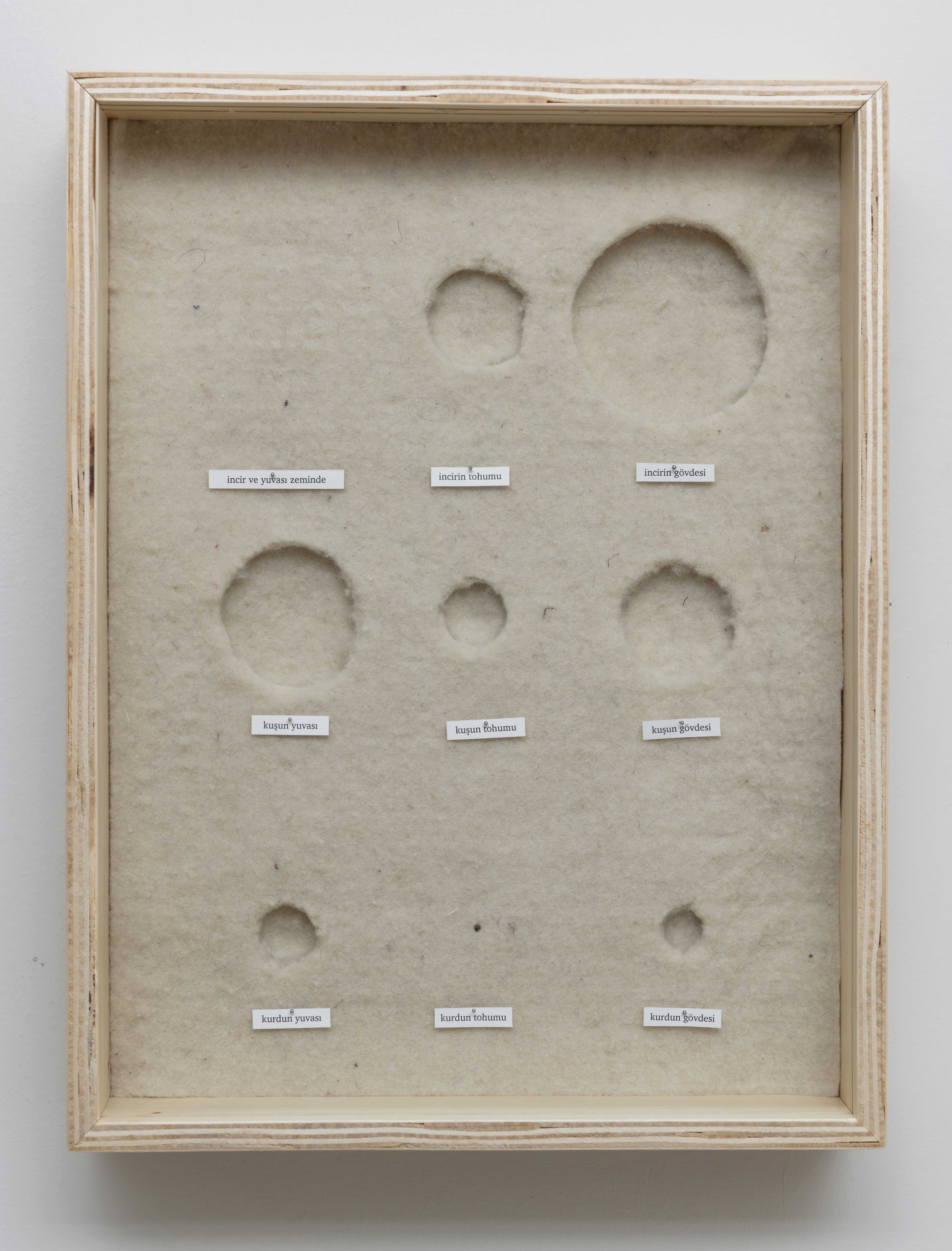Natives and Displaced Ones
Artistic research, installation / İzmir / Bayetav Sanat
The project is developed within the scope of the Mahsul [Yield] Project and exhibited at Mahsul Vakaları - Yield Events exhibition.
Artistic research, installation / İzmir / Bayetav Sanat
The project is developed within the scope of the Mahsul [Yield] Project and exhibited at Mahsul Vakaları - Yield Events exhibition.





Installation.
Wooden plinth and a fig tree sapling, 270 x 270 x 150 cm.
Found and produced objects, frame, 30 x 40 x 5,5 cm (6 pieces)
Sound, 5’ 45”, Syrian Woodpecker-Dendrocopos syriacus.
As humans transform the uncultivated and unclaimed 'mevat' lands into gardens and orchards, İzmir evolves into an important connecting port in the trade network carrying the fruits of Western Anatolia to Europe. Centuries pass, hunts and hunters, natives and displaced ones change. While the birds of this harbor fly into exile, the woodworms of distant ecologies reach this harbor. Finding the strength to mature and settling in the hollow of the tree, the worm cultivates its own gardens on the tree. In the absence of the bird, the tree that feeds the worm's belly cannot nourish itself or humans anymore. The gardens turn into landscapes of struggle.




The Natives and Displaced Ones is a current station of the research of the same title that explores the entangled stories of the Fig Tree, the Woodpecker, the Woodworm, and Human that have left traces along the Mediterranean coasts. The installation originates from the Land Law of 1858, which can be considered as a turning point in the environmental history of the geography covered by the Ottoman Empire. Assembling a multispecies narrative, Natives and Displaced Ones installation opens up questions about ownership, care, and satisfaction in humanity's relationship with the land. As a part of the installation, a spatial intervention questions the scale and the ownership of the land that is occupied to feed and settle. A video installation and cabinets of curiosities hosting the traces of species of this entangled story completes this intervention.
Natives and Displaced Ones installation is produced with the support of BAYETAV. The research process was supported by CultureCIVIC, a project by the European Union, which included consultancy support from Meriç Öner.
Natives and Displaced Ones hosts the book Seeds of Power by Onur İnal and Yavuz Köse, which compiles various studies on Ottoman environmental history. Maps from 1925 depicting various districts of Izmir, selected from the SALT Research Collection, accompany the installation.
Photo credits: Kayhun Kaygusuz